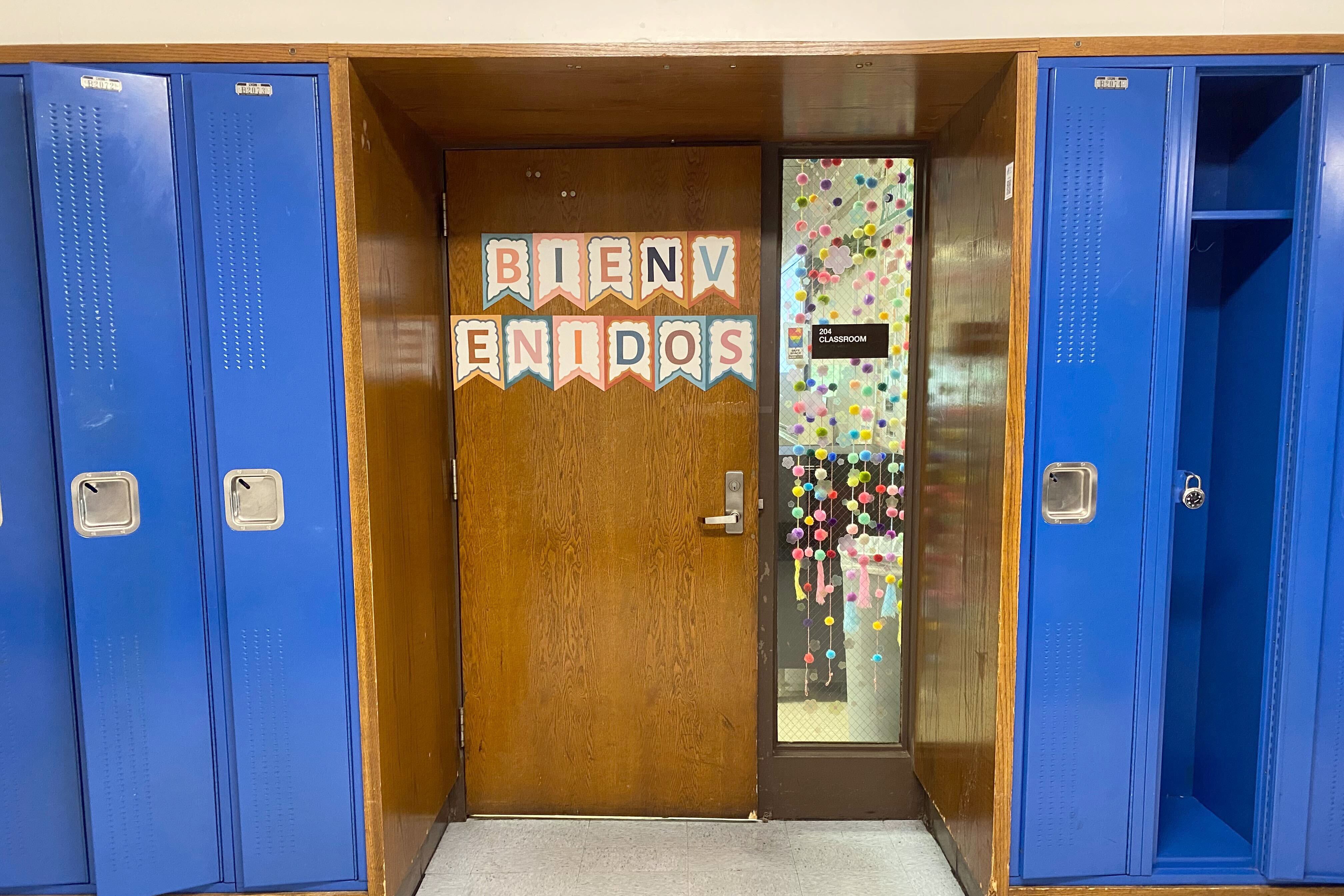Sign up for Chalkbeat Chicago’s free daily newsletter to keep up with the latest education news.
How many migrant students are enrolled in Chicago Public Schools? The exact number is hard to pin down.
The district says about 8,900 migrant students are currently attending local schools, according to CPS data. But that number climbs to more than 17,000 when using the Illinois State Board of Education’s definition for students eligible for the Immigrant Education Program — students born outside the U.S. who started attending school in this country in the past three years are categorized in this group.
An accurate picture of how many immigrant students are arriving and enrolling in local public schools is becoming more important as schools work to support newcomers from Latin America, as well as other countries around the world. A proposal in the Illinois legislature would provide money to districts faster to help new students.
But the size of the enrollment increase — and the existing resources — depends on which agency is counting students. In response to an information request from Chalkbeat for migrant student enrollment numbers, Chicago Public Schools and the Illinois State Board of Education produced different numbers, based on different definitions and methods of categorizing newly arrived students:
- Chicago Public Schools says the district is currently serving 8,900 students who arrived since August 2022, including those who passed through the southern border and were bused to Chicago from Texas. The district uses five criteria to identify this cohort: students who speak languages other than English at home, have been identified as students in temporary living situations, are new to the district arriving after August 2022, were born outside of the country, or are listed on the city’s Department of Family and Support Services shelter roster.
- The Illinois State Board of Education, on the other hand, says any student not born in the U.S. or Puerto Rico who has been attending school in this country for less than three years is eligible for the Immigrant Education Program. Chicago estimates roughly 17,000 students fit this definition. Chicago just started to collect this data in November 2023 and school staff are collecting the birth country and enrollment date of students.
Between 2019 and November 2023, Chicago Public Schools officials said, the district stopped gathering information on students’ birth country and the date of first enrollment in the U.S. in response to threats against immigrants and their citizenship status and as part of the implementation of sanctuary provision in the collective bargaining agreement with the Chicago Teachers Union. However, the district resumed the practice after being pushed by the state board of education.
In addition, the numbers continue to fluctuate. Last month, CPS CEO Pedro Martinez told reporters that the district has welcomed more than 6,000 new arrival students into schools this year.
Chicago Public Schools also estimates that its population of English learners – students whose first language is not English and are in need of bilingual programs and support – has increased by 12,000 students, jumping from 76,000 to 88,000 over the last year students as of April 12. English learners may include students born in the U.S.
A Chalkbeat analysis in February found that the number of English language learners in CPS grew since the end of September, with an additional 7,000 English learners enrolled in schools around the district.
Even as state and local school districts have different definitions on how to categorize students who recently immigrated to the United States, lawmakers, advocates, educators, and the Chicago Teachers Union continue to raise concerns that there are not enough bilingual staff and resources available to support students.
State Rep. Fred Crespo, a Democrat representing suburbs northwest of Chicago, has filed a pair of bills — House Bill 2822 and House Bill 3991 — that would allow the Illinois State Board of Education to create a New Arrivals Grant program to distribute funding to school districts who need more support for new arrival students.
When Crespo first filed the bill last year, he asked the general assembly to approve $35 million. Now, he is asking for $188 million because the number of students has increased.
In February, Gov. J.B. Pritzker’s proposed budget did not include money for newcomers requested by the Illinois State Board of Education. A spokesperson for Pritzker’s office previously told Chalkbeat that schools can access federal funding through the McKinney-Vento Homeless Assistance Act and the governor’s proposed $350 million increase for K-12 schools will help.
Local education advocates say families who have migrated from Latin America countries are transient, often moving from community to community as they look for a home to settle in. As students continue to transfer between districts, advocates say the state’s evidence-based funding formula is unable to capture the growing need of schools.
The state distributes resources to districts based on enrollment and adds additional funding based on the number of low-income students, English language learners, and students with disabilities. The state formula looks at enrollment from two points in time during the school year. With families moving between communities, the number may not capture the number of immigrant students a district has served.
Bridget Peach, executive director of Ed-Red — an organization that advocates for suburban school districts — and a supporter of Crespo’s bill, says students migrating from the southern border often leave school districts quickly.
“At the beginning of the year, the enrollment snapshot is taken,” Peach said. “Some of those students are leaving the next week, some are staying until the end of the school year, but they aren’t re-enrolling in the district.”
State lawmakers are debating whether to include Crespo’s New Arrivals Grant program in the budget. They must pass a budget at the end of the legislative session, which is scheduled for the end of May.
Samantha Smylie is the state education reporter for Chalkbeat Chicago, covering school districts across the state, legislation, special education, and the state board of education. Contact Samantha at ssmylie@chalkbeat.org.






